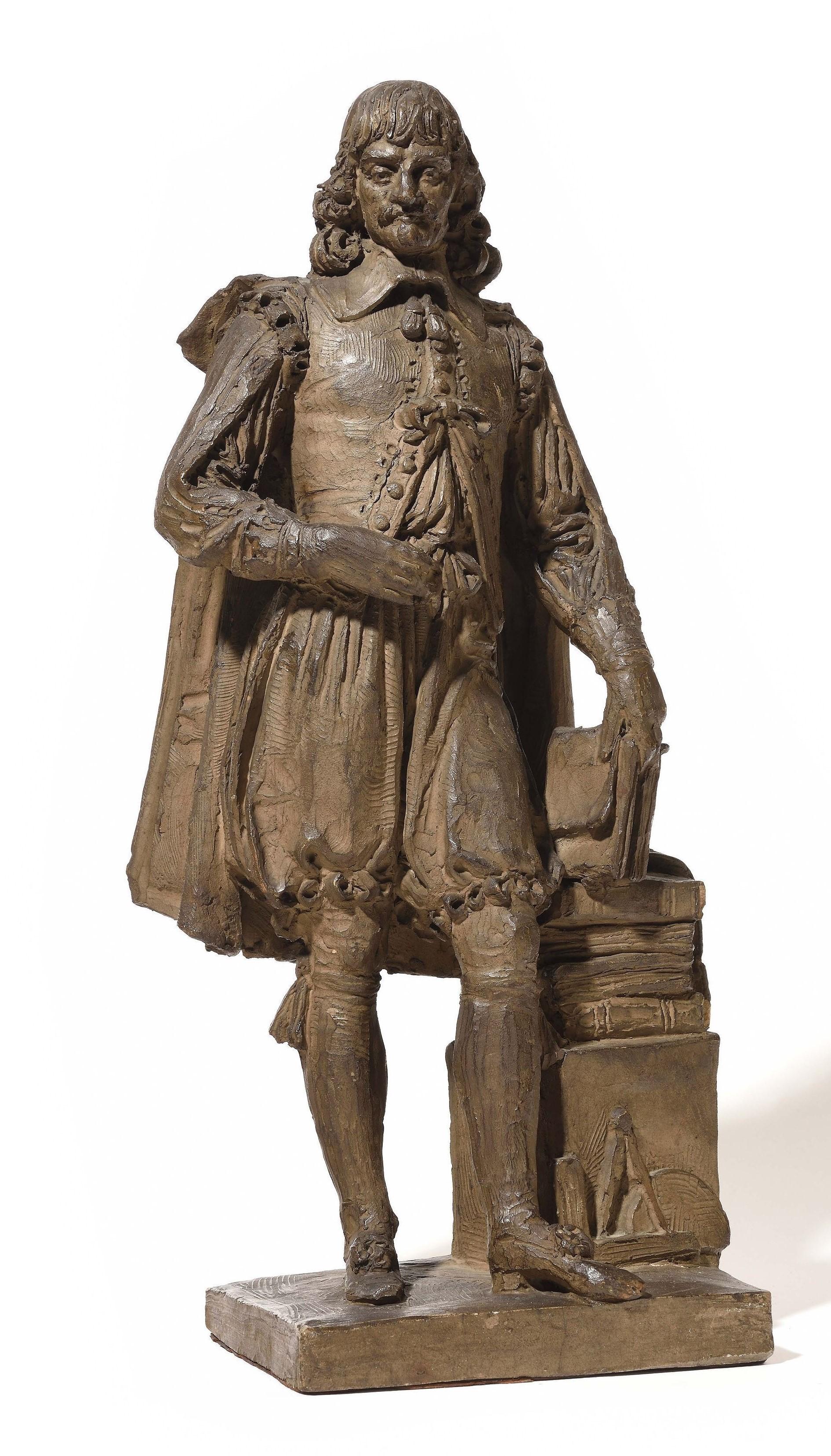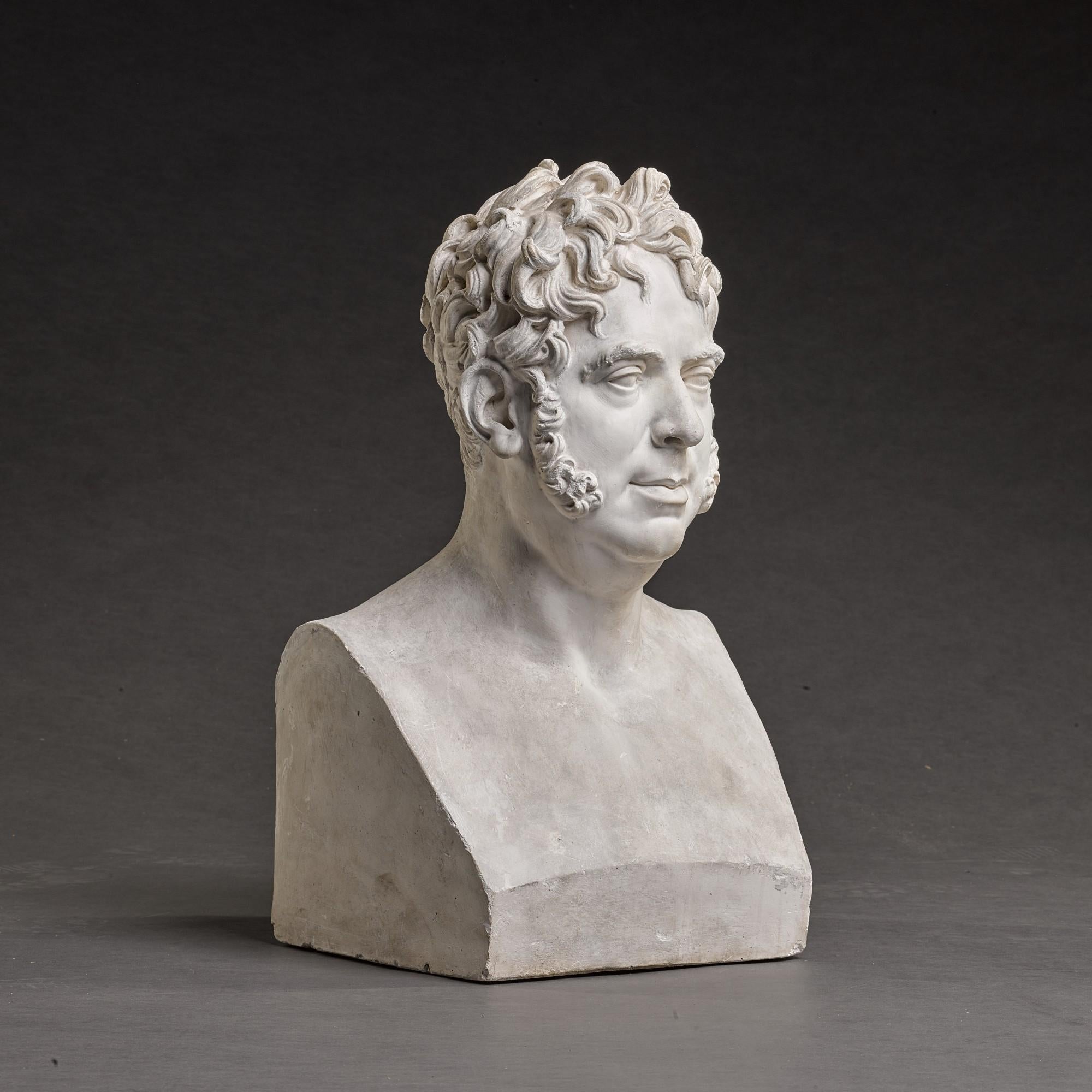Items Similar to Suzanne Surprise
Want more images or videos?
Request additional images or videos from the seller
1 of 9
Jean-Baptiste CarpeauxSuzanne Surprisecirca 1875
circa 1875
About the Item
"Suzanne Surprise" by Jean-Baptiste Carpeaux (1827-1875)
Terra cotta
"Propriété Carpeaux"
Marked with the stamp ‘Propriété Carpeaux’ with the Imperial Eagle and the stamp 'Atelier et Dépôt Auteuil Paris'.
Made during Carpeaux' lifetime or shortly after his death
France
circa 1875-1880
height 64 cm
A similar model is reproduced in « Jean-Baptiste Carpeaux sculpteur, catalogue raisonné de l’œuvre édité », Exposition du Musée des Beaux-Arts de Carcassonne, 2003, page 96.
Biography :
Jean-Baptiste Carpeaux (1827-1875) grew up in a modest family of workers in Valenciennes. He liked to draw and wanted to study sculpture against the will of his father. At the Academy of the city, he followed René Fache's sculpture classes and Bernard's architecture classes. Arrived in Paris in 1838 with his family, Carpeaux received a first training in drawing and modeling at the Little School. In 1844, he entered the School of Fine Arts in Paris in the studio of François Rude. Ten years later, he won the Prix de Rome. His arrival in the Italian capital was deferred for a year, the artist having to complete several orders. Carpeaux moved to the villa Medici in January 1856 and studied the great masters: Raphael, Michelangelo. He travelled to Italy where he drew his taste for movement and spontaneity. From his Italian stay, he sculpted three shipments, the Little Pouter, the Fisherman with the shell and his Ugolin surrounded by his four children.
In 1862, as he returned to Paris, Carpeaux was introduced to the imperial court by his friend and patron, Eugene Halwin Piennes, soon chamberlain of the Empress. He sculpted the same year a bust of Princess Mathilde whom allowed him to obtain several orders from the Emperor Napoleon III. But each of his works, in which his naturalist conceptions and his desire to recreate the movement inspired by the Baroque style, were the subject of controversy. Carpeaux took part in the exterior decoration of the Flore pavilion at the Louvre Palace (The Triumph of Flora, considered too sensual), and the opera newly built by Garnier, with a high relief La Danse, indignant to the public by his freedom and his realism.
He collaborated with the architect Gabriel Davioud for his latest work, the Fountain of the Four Parts of the World, also known as Fontaine de l'Observatoire in Paris. The last years of his life were dark. The war and the defeat of 1870 dried up the orders. At the same time, Carpeaux developed, with respect to his wife, an unhealthy jealousy that led to the separation of the couple in 1874. Under the influence of his parents, short of money, he abandoned the direction of his workshop to his brother. In 1875, he died at the age of forty-eight, after a terrible suffering due to bladder cancer. Jean-Baptiste Carpeaux, very attached to his hometown, bequeathed part of his works to the Museum of Fine Arts of Valenciennes.
- Creator:Jean-Baptiste Carpeaux (1827 - 1875)
- Creation Year:circa 1875
- Dimensions:Height: 25.2 in (64 cm)Width: 10.24 in (26 cm)Depth: 7.88 in (20 cm)
- Medium:
- Movement & Style:
- Period:
- Condition:
- Gallery Location:PARIS, FR
- Reference Number:

About the Seller
5.0
Vetted Seller
These experienced sellers undergo a comprehensive evaluation by our team of in-house experts.
Established in 1992
1stDibs seller since 2023
Typical response time: 1 to 2 days
- ShippingRetrieving quote...Ships From: PARIS, France
- Return PolicyA return for this item may be initiated within 3 days of delivery.
More From This SellerView All
- Young woman wearing a shawlBy Albert-Ernest Carrier-BelleuseLocated in PARIS, FRBust of a young woman wearing a shawl by Albert-Ernest Carrier-Belleuse (1824-1887) Terracotta bust Raised on a in blackened wood pedestal signed "A. Carrier " France circa 1860 total height 41 cm width 24 cm depth 17 cm Biography : Albert-Ernest Carrier de Belleuse known as Carrier-Belleuse (1824-1887) was one of the most prolific artists of the century and had the greatest successes under the Second Empire, enjoying the personal support of Napoleon III. His work was greatly influenced by the style of the Italian Renaissance and that of the 18th century, which he helped to bring up to date. In 1837, the young Carrier-Belleuse apprenticed in the workshop of the engraver Bauchery. He was admitted soon after to the goldsmith Jacques Henri Fauconnier. Through François Arago, he met the sculptor David d'Angers who facilitated his admission to the School of Fine Arts. Carrier-Belleuse entered it in 1840. Noted for his skill by the great bronze companies in Paris such as Barbedienne and Denière, he soon received numerous orders for models for candelabras, pendulums, fittings for fireplaces, etc. In 1848, probably at the initiative of François Arago, who became head of state, he received his first public order for a small statue of "Mademoiselle Rachel singing La Marseillaise". In 1851, he appeared for the first time at the Salon of French Artists, where he presented two bronze medallions. From 1851 to 1855, Carrier-Belleuse stayed in England, in Stoke-on-Trent where he served as director of the modeling and drawing school of the Minton house, a large porcelain manufacturer. Back in France, Carrier-Belleuse moved to Paris in a large workshop located 15 rue de la Tour d´Auvergne. From 1857, he made regular sendings to the Salon and became famous thanks to the success of large marbles, such as the "Bacchante" exhibited at the Salon in 1863, and acquired by Napoleon III, "Angelica" (1866) or even "Hebe asleep" (1869). At the Salon of 1867, his group entitled "Messiah" earned him the medal of honor of sculpture. It was acquired by the State to adorn the Chapel of the Virgin in the Saint-Vincent-de-Paul church. Carrier-Belleuse acquired a great reputation in parallel for his terracotta busts which, in many respects, recall those of 18th century artists. He made portraits of a large number of celebrities of his time. He produced, among others, the busts of Napoleon III, Renan, Thiers, Grévy, Arago, Marguerite Bellanger, Théophile Gautier, Honoré Daumier, Delacroix, Hortense Schneider, Réjane… He also modelled numerous busts of mythological inspiration and historical and artistic portraits like Marie Stuart...Category
1860s French School Figurative Sculptures
MaterialsTerracotta
- ParrotletLocated in PARIS, FRParrotlet by Armand PETERSEN (1891-1969) & SEVRES Manufacture Sculpture in white paste porcelain Signed « A. Petersen » Old edition artwork. Stamped by the porcelain manufacture of ...Category
1930s French School Figurative Sculptures
MaterialsPorcelain
- Hay BalerBy Aimé-Jules DalouLocated in PARIS, FRThis Hay baler is a subject that is included in the famous suite commonly called "little workers" by Jules Dalou (1838-1902) Bronze with dark brown patina c...Category
Late 19th Century French School Figurative Sculptures
MaterialsBronze
- Bearer of wheat sheavesBy Aimé-Jules DalouLocated in PARIS, FRThis bearer of sheave is a subject that is included in the famous suite commonly called "little workers" by Jules Dalou (1838-1902) Bronze with dark brown patina cast by Susse Frère...Category
Late 19th Century French School Figurative Sculptures
MaterialsBronze
- Roman driver on his chariotBy Emmanuel FremietLocated in PARIS, FREquestrian sculpture "Roman driver on his chariot" by Emmanuel Fremiet (1824-1910) Bronze with its original nuanced dark brown patina cast by MORE France circa 1880 height 41,5 cm l...Category
1880s French School Figurative Sculptures
MaterialsBronze
- Woman bringing back grassBy Aimé-Jules DalouLocated in PARIS, FRThis Peasant resting is a subject that is included in the famous suite commonly called "little workers" by Jules Dalou (1838-1902) Bronze with nuanced dark brown patina cast by Suss...Category
Late 19th Century French School Figurative Sculptures
MaterialsBronze
You May Also Like
- L'AiglonBy Louis OuryLocated in Paris, FRLouis Oury (1867 - 1940) L’Aiglon, 1899 Terracotta with polychromatic patina Signed on the shoulder and Seal from Goldscheider on the reverse Dimensions : 65 x 40 x 30 cm (25 x 15 3/...Category
19th Century French School Figurative Sculptures
MaterialsTerracotta
- Dominique Mahlknecht (1793-1876) The french philosopher René DescartesLocated in BELEYMAS, FRDominique (Johann Dominik) MAHLKNECHT (Kastelruth, 1793 - Paris, 1876) Full length portrait of René Descartes Terracotta with brown patina Height: 40cm ...Category
1840s French School Figurative Sculptures
MaterialsPlaster
- General Cambronne bust in "Hermès" - Att. to E-E Suc (1802-1855)Located in BELEYMAS, FRAttributed to Etienne-Édouard SUC (Lorient, 1802 – Nantes, 1855) Bust "in Hermès" of General Cambronne Plaster H. 59 cm 1842 Provenance: probably Madame Cambronne (1773-1854), widow...Category
1840s French School Figurative Sculptures
MaterialsPlaster
- Antique Silvered Bronze Rooster, France circa 19th CenturyLocated in SANTA FE, NMAntique Silvered Bronze Rooster France, circa 1900 10 1/4 x 9 1/2 (H x D) inches A very fine and lively bronze statuette of a preening Rooster. Nicely cast and well-carved and in ex...Category
19th Century French School Figurative Sculptures
MaterialsSilver, Bronze
- Antique Bronze Dog Portrait of a Cavalier King Charles "Thigley" circa 1905Located in SANTA FE, NMAntique Bronze Dog Portrait of a Cavalier King Charles "Thigley" French School (possibly Franck Burty Haviland) Lost wax bronze casting Circa 1910 5 7/8 x 9 x 3 1/4 A sophisticated bronze casting of a Cavalier King Charles spaniel made in lost wax casting (cire perdue) from the beginning of the 20th century by Valsuani Foundry. This an unusual bronze approached in its aesthetic that’s reminiscent of the work of great animal sculptors of the second half of the 19th century except in this presentation which is more avant-garde for the time with a much looser, more impressionistic execution. The patina is a superb bronze color, brown and slightly greenish, going in places towards a more antique green. The attitude of the dog is extremely well and sensitively rendered with the placement of material unlike the renderings of a bronze by Barye...Category
Early 1900s French School Figurative Sculptures
MaterialsBronze
- Antique French Grand Tour Gilt Bronze Statue on Column Diana the Huntress 1838By Ferdinand BarbedienneLocated in Portland, ORA fine & large (34" tall) antique French gilt-bronze on marble column of Diana, cast by Ferdinand Barbedienne (1810-1892) after a statue by Jean Antoine Houdon (1741-1828), the bronz...Category
1830s French School Figurative Sculptures
MaterialsMarble, Bronze


